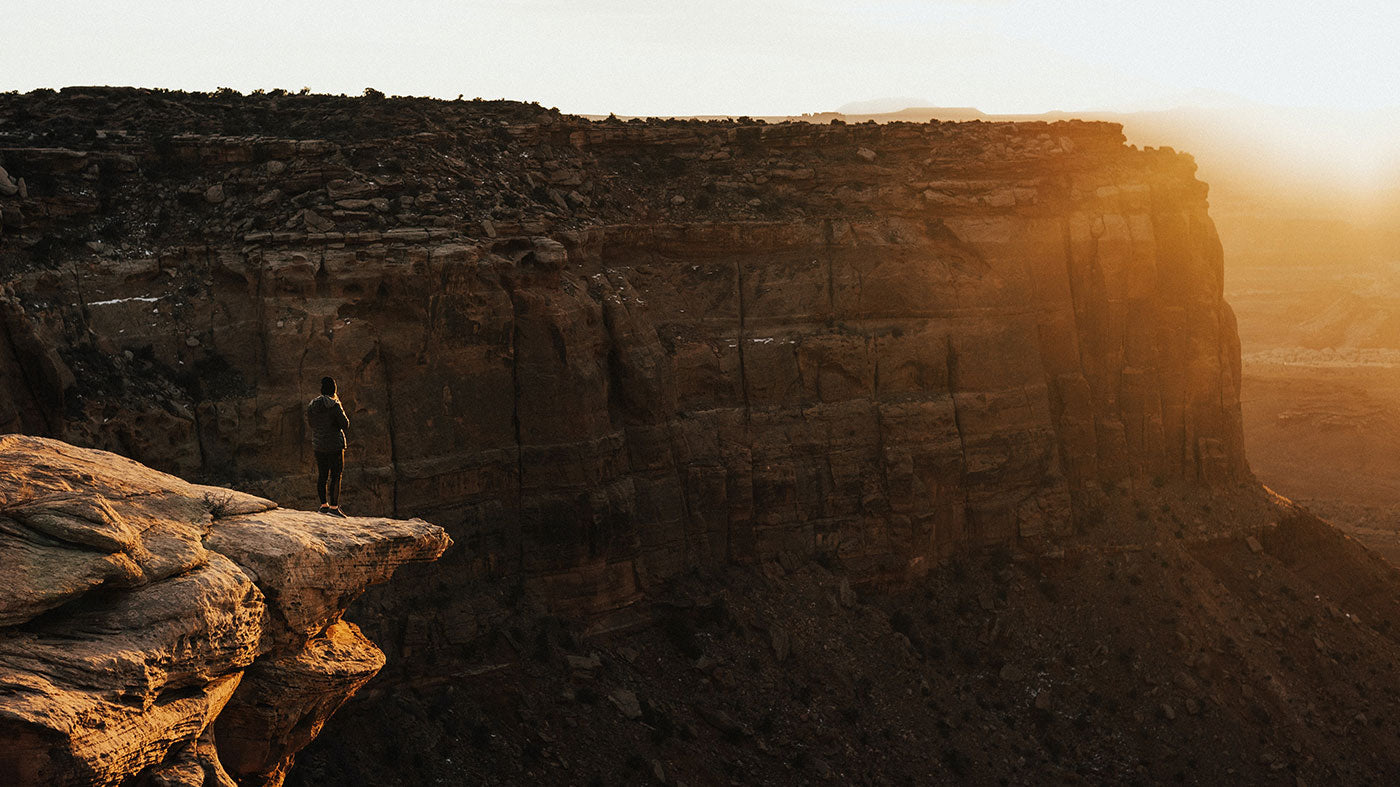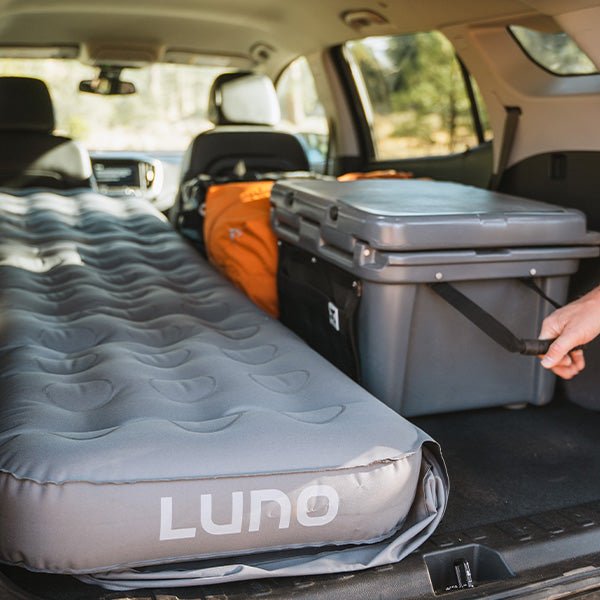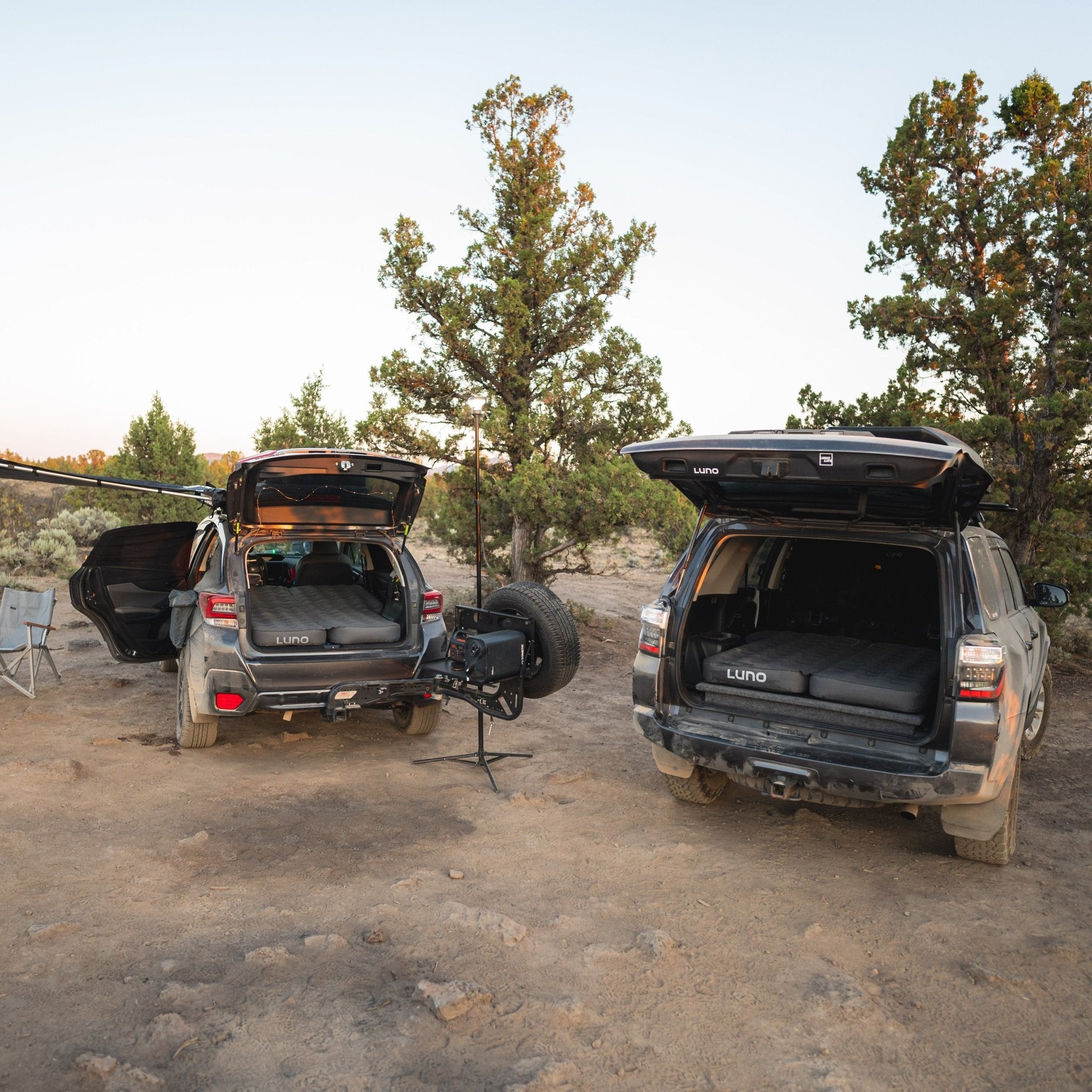So you’ve found the perfect car camping site in nature, now how do you use it?
Dispersed camping is camping that takes place outside of a designated campground. It usually takes place on public land managed by the US Forest Service or on the 245 million acres of land overseen by the Bureau of Land Management. Dispersed camping often involves staying somewhere without the services provided by most campgrounds. While forfeiting these amenities may sound intimidating, it’s a worthy tradeoff for the freedom to roam in frequently unexplored areas.
Improvise, adapt, overcome
Because there is no infrastructure in place for dispersed camping, you’re going to need to provide the basic amenities that would be found at a campsite yourself. One way to do this is by adjusting your travel approach to fill in the gaps. Bringing a dumpster is not feasible, but minimizing the waste you generate totally is. You can also bring your own portable alternatives for campsite staples! It’s unlikely you’ll be able to fit a wooden picnic table in your backpack but there are a ton of ultra-light, portable chairs on the market so you can still kick back and relax in the wild.
Location, location, location
Choosing where to park your homestead is one of the most important decisions you will make while dispersed camping. It’s imperative you stay at least 100 feet away from any natural water sources to maintain the integrity of the local ecosystem. Messing with a water source can have an extensive domino effect on every plant or animal in the area. It’s recommended that you don’t roam too far off the beaten path for safety and environmental reasons. The USDA Forest Service suggests that you stay within 150 feet of a roadway to prevent resource damage and at least one mile away from campgrounds.
Do the safety dance
Dispersed camping can be a bit more dangerous than camping at a campground. Staying in a more desolate area means that the nearest assistance in case of emergency is usually farther away, interaction with wildlife is more likely, and you will probably not have cellular service. The heightened possibility for danger requires you to be extra cautious before and during your travels. Luckily, it can be perfectly safe to sleep in your car with the right precautions! Always let a friend know where you plan on staying before you leave. In the unlikely event that someone needs to search for you, having even a general idea of your whereabouts is hugely beneficial. Don’t try to stretch your supplies to the very last bit if you are running low on provisions. You should always return from your trip with a little water and food leftover! And per usual, be extra careful with campfires. It’s always better to be safe than sorry.
Preparation is key
Failure to prepare is preparation for failure when it comes to dispersed camping! A successful stay somewhere without the typical amenities requires additional planning. You’re going to need a backup supply of water, food, and energy if you plan on staying farther off the beaten path. We suggest you begin the packing process at least a week prior to departure. This way, you can do multiple run-throughs of your checklist to ensure you have absolutely everything you could possibly need.
Know before you go!
Knowledge is the most important camping equipment. Start checking the weather forecast a week before you plan to hit the road. A 20% chance of rain can turn into a soaking downpour in the blink of an eye so we recommend you pay particularly close attention to any predicted precipitation. Fire permits, conservation areas, and off-season rules are also useful points of research for dispersed camping. Lastly, we suggest you look into wildlife activity for the area you plan on visiting. Check if it’s any species’ mating season and read up on the recommended protocol for if a wildlife encounter occurs.
Stop, drop, and roll
Emergency preparedness is another critical part of the preparation process. Most dispersed camping takes place far away from other people or establishments, so the role of first responders will likely fall on travelers themselves. A fully locked and loaded first aid kit is always the first item to pack for any trip.
H2O on the go
Water is going to be the most important resource for you to manage. We suggest that you carry empty jugs in the car that you can fill up when you get closer to your destination to avoid lugging gallons of water with you while on the road. This will allow you to load up on the good stuff after you’ve done most of your traveling. Also, be sure to take note of the nearest water source as soon as you settle into your home base. Whether that be a nearby stream or a local gas station, it’s always good to be aware of your resource options just in case of an emergency.
Concentration on conservation
A little conservation can go a long way! Water and power will be the main areas of focus for conservation. Opting for hand sanitizer rather than washing your hands is a great way to stretch your H2O supply a little further. Additionally, pre-washing fruits and vegetables before you get on the road help to save water without compromising sanitation. You can save water that would be spent on dishwashing by using biodegradable paper goods for rapid disposal and minimal harm to the environment.
Remember the little guys
Personal experience has led us to believe that forgotten toiletries will be the demise of mankind. Dispersed camping takes place in solitude, so it’s crucial you remember the little things like lighters and sunscreen that can slip your mind when packing. There’s no general store to save you when you get to camp and realize that you forgot something at home, so double then triple-check that you’ve got your toothpaste before you hit the road.
Leave no trace
If we had a tree for every time we waxed poetic about the importance of not leaving a trace we could walk through a forest forever. Dispersed camping is special because it allows us to be close to nature in its purest form, untainted by human interference. Leaving no trace is the best way to ensure the great outdoors can stay wild for future dispersed campers, so take only pictures and leave only footprints!













